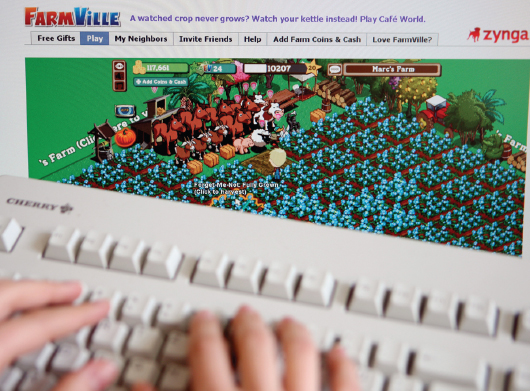MMORPGs, Virtual Worlds, and Social Gaming
“I play this game six nights a week from 8 P.M. to midnight. When I say that to people, sometimes they look at me a little funny. But then I point out that most people watch TV at least that much, and television is a totally mindless experience. Instead of watching Lord of the Rings as a three-hour experience, I am now participating in the epic adventure.”
JASON PINSKY, GAMER, ON PLAYING WORLD OF WARCRAFT, 2006
It is one of the longest acronyms in the world of gaming: massively multiplayer online role-playing games (MMORPGs). These games are set in virtual worlds that require users to play through an avatar of their own design. The “massively multiplayer” aspect of MMORPGs indicates that electronic games—once designed for solo or small-group play—have expanded to reach large groups, similar to traditional mass media.
The fantasy adventure game World of Warcraft is the most popular MMORPG, boasting more than ten million players around the globe. Users can select from twelve different “races” of avatars, including dwarves, gnomes, night elves, orcs, trolls, goblins, and humans. To succeed in the game, many players join with other players to form guilds or tribes, working together toward in-game goals that can be achieved only by teams. Second Life, a 3-D social simulation set in real time, also features social interaction. Players build human avatars, selecting from an array of physical characteristics and clothing. Then they use real money to buy virtual land and to trade in virtual goods and services.
Simulations like Second Life and MMORPGs like World of Warcraft are aimed at teenagers and adults. One of the most overlooked areas (at least by adults) in online gaming is the children’s market. Club Penguin, a moderated virtual world purchased by Disney, enables kids to play games and chat as colorful penguins. Disney later developed additional Club Penguin games for handheld players. Toy maker Ganz developed the online Webkinz game to revive its stuffed animal sales. Each Webkinz stuffed animal comes with a code that lets players access the online game and care for the virtual version of their plush pets. In 2009, as Webkinz sales declined, Ganz started Webkinz Jr. to market bigger, more expensive plush animals to preschoolers. Woozworld offers a virtual shopping world and chat for the tween market, ages nine to fourteen. All of these virtual worlds offer younger players their own age-appropriate environment to experiment with virtual socializing, but they have also attracted criticism for their messages of consumerism. In many of these games, children can buy items with virtual currency, or acquire “bling” more quickly through a premium membership. The games also market merchandise to their young players, such as stuffed animals, movies, and clothing.

Online fantasy sports games also reach a mass audience with a major social component. Players—real-life friends, virtual acquaintances, or a mix of both—assemble teams and use actual sports results to determine scores in their online games. But rather than experiencing the visceral thrills of, say, Madden NFL 13, fantasy football participants take a more detached, managerial perspective on the game—a departure from the classic video game experience. Fantasy sports’ managerial angle makes it even more fun to watch almost any televised game because players focus more on making strategic investments in individual performances scattered across the various professional teams than they do in rooting for local teams. In the process, players become statistically savvy aficionados of the game overall, rather than rabid fans of a particular team. In 2012, about thirty-four million people played fantasy sports in the United States and Canada; the Fantasy Sports Trade Association currently estimates a market size in the neighborhood of $2 billion.9
The increasingly social nature of video games has made them a natural fit for social networking sites. Game apps for Facebook have drawn millions of fans. Zynga is the maker of several of the most popular games on Facebook, including Bubble Safari, FarmVille 2, and Words with Friends. Facebook reported in 2013 that over 260 million people play games on its social network site.